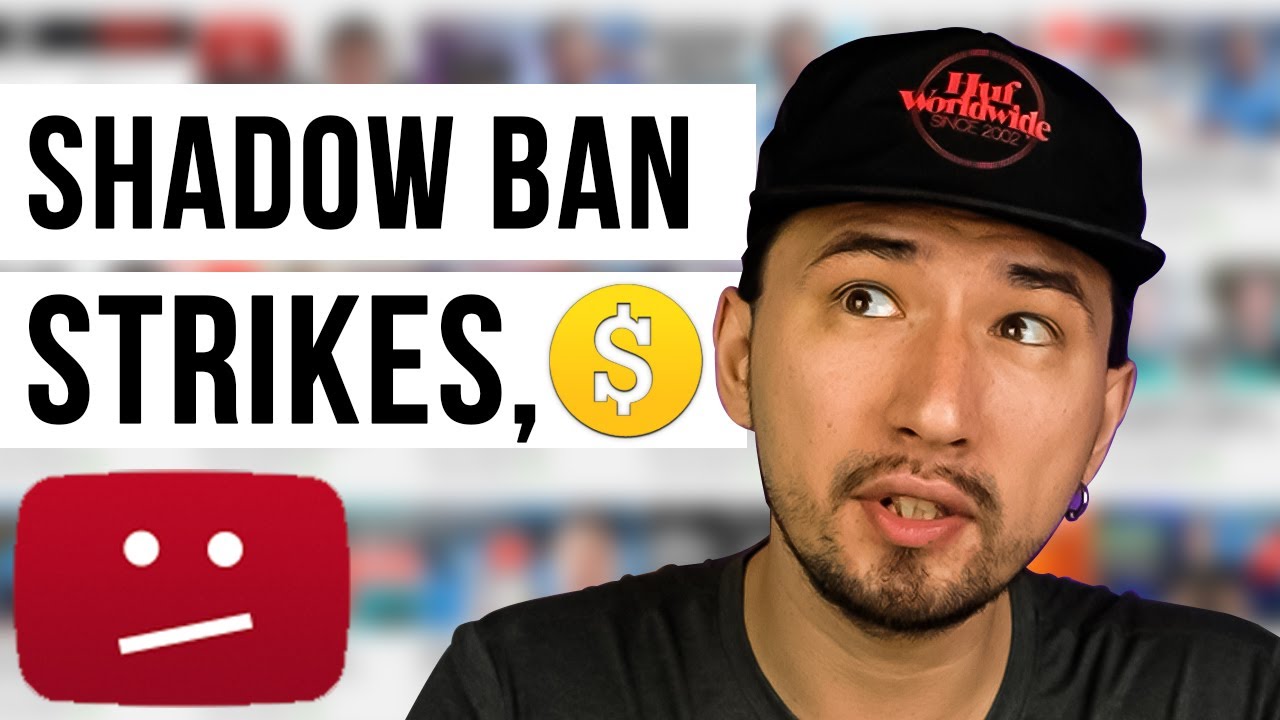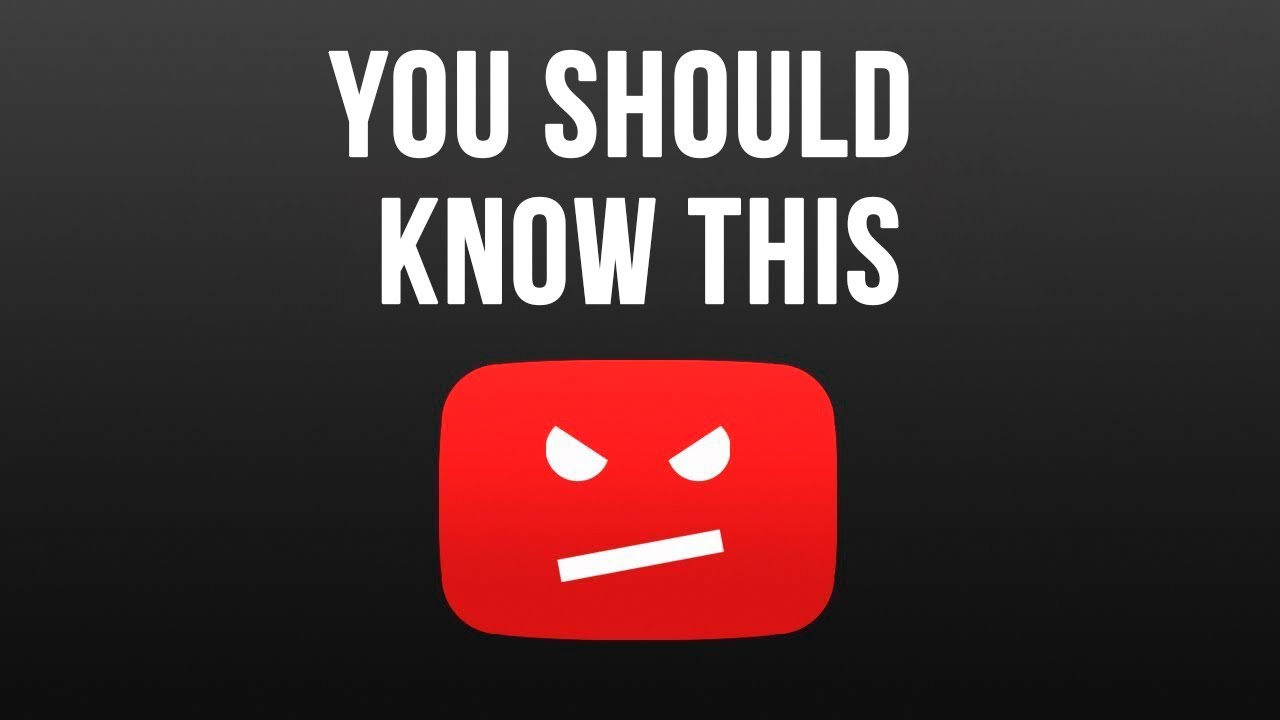YouTube has become a cornerstone of online video content, but not all creators find it easy to maintain their channels. Many individuals, like Steve, may face channel bans or suspensions, leaving them confused about what went wrong. Understanding the intricacies of YouTube's policy can help demystify these bans and enable creators to navigate the platform more effectively. In this post, we'll explore the reasons behind channel bans and what creators can do to avoid them.
The Reasons Behind Channel Bans

Channel bans on YouTube can be alarming, especially when creators have invested significant time, effort, and resources into building their platforms. Let's break down some of the common reasons why a channel might face a suspension or ban, focusing on Steve's situation for a clearer understanding.
- Community Guidelines Violations: YouTube has a set of community guidelines that all users must adhere to. Violations, such as hate speech, harassment, or graphic content, can lead to channel strikes or outright bans.
- Copyright Infringement: Using copyrighted material without permission can be a major reason for channel removal. This includes music, videos, or even images that the creator doesn't own or have the right to use.
- Misleading Metadata: Creators using clickbait titles or thumbnails to mislead viewers can face penalties. YouTube values transparency and accuracy, so misleading practices can harm a channel's credibility and lead to consequences.
- Spam, Scams, or Deceptive Practices: Engaging in spammy behavior, such as posting repetitive comments or promoting scams, can also trigger a ban. YouTube aims to maintain a safe environment and discourages any fraudulent activity.
- Fake Engagement: Buying subscribers or views is another way a channel can land in trouble. Authentic engagement is crucial for credibility, and YouTube keeps a close eye on any suspicious activity.
It's important to note that YouTube operates on a "three strikes" policy. This means that if a channel receives three strikes within 90 days, it could lead to a permanent ban. However, not all strikes are created equal. Some violations are considered more severe than others, which can lead to immediate bans without prior strikes.
For creators like Steve, it's crucial to understand the guidelines set forth by YouTube. Regularly reviewing the Community Guidelines and staying updated on policy changes can significantly reduce the risk of a ban. While mistakes happen, being proactive about compliance is key to maintaining a successful channel.
Moreover, engaging with the YouTube community can also be beneficial. By participating in forums or discussion groups, creators can share experiences and learn from others who may have faced similar challenges. In the end, awareness and adherence to YouTube's policies not only safeguard a channel but also enhance the overall experience for both creators and their audiences.
Also Read This: How to Stream YouTube Shorts: Tips for Content Creators
3. Understanding YouTube's Community Guidelines

When it comes to maintaining a safe and respectful platform, YouTube has established a set of Community Guidelines that all creators must adhere to. These guidelines cover a range of content types and behaviors, ensuring that viewers can enjoy videos without encountering harmful or inappropriate material. But what exactly do these guidelines entail?
First off, YouTube's Community Guidelines aim to encourage positive interactions while prohibiting content that may be deemed offensive or harmful. Here are some critical aspects to understand:
- Hate Speech: Content that promotes violence or hate against individuals or groups based on attributes like race, ethnicity, religion, disability, gender, or sexual orientation is strictly prohibited.
- Harassment and Bullying: YouTube does not tolerate content that aims to bully, threaten, or intimidate others. This includes doxxing (sharing personal information like addresses or phone numbers) and targeted harassment.
- Content Involving Minors: Special rules apply to videos involving minors to protect their privacy and ensure their safety. Content that exploits or endangers minors is promptly removed.
- Spam, Scams, and Deceptive Practices: YouTube wants to maintain a genuine community. Therefore, any content attempting to scam users or promote misleading practices will face strict penalties.
- Violent or Graphic Content: While some graphic content may be acceptable when contextualized—for instance, in educational videos—YouTube often removes graphic content that does not serve an important purpose.
It's essential for creators to familiarize themselves with these guidelines because YouTube exercises a three-strike policy regarding violations. The first infraction may lead to a warning, but subsequent violations can result in channel termination or bans.
So, why is understanding these guidelines crucial for someone like Steve? If he's unaware of even minor stipulations, he risks inadvertently crossing lines that could jeopardize his channel’s existence. This is particularly relevant for creators who are passionate and invested in their content; a misstep can be disheartening. Hence, adhering to the Community Guidelines isn't just a matter of rule-following; it's about cultivating a sustainable and enjoyable environment for both the creator and the audience.
Also Read This: How to Block Content on YouTube: A Step-by-Step Guide
4. Case Study: Steve's Channel and its Suspension

To illustrate the complexities of YouTube's Community Guidelines, let’s delve into a fictional case study—our friend Steve's channel. Steve is a passionate content creator who posts gaming videos. With a growing audience, he excitedly uploaded everything from gameplay mechanics to entertaining commentary. However, his journey took a drastic turn when his channel was suspended, leaving him puzzled and frustrated.
Upon reviewing his content, it became evident that Steve inadvertently violated several Community Guidelines:
- Use of Copyrighted Material: One of Steve’s popular episodes included gameplay footage from a game without obtaining clearance or permission. YouTube’s automated systems quickly flagged this video, considering it a copyright infringement.
- Inappropriate Language: In some of his earlier videos, Steve used language that could be considered offensive or profane. While he aimed to express his passion, YouTube categorizes certain strong language as a violation, leading to age-restrictions or even channel strikes.
- Misleading Titles: To attract more views, Steve sometimes opted for sensationalized titles that misrepresented his content. YouTube takes misleading thumbnails and titles seriously, as they can misinform viewers.
Steve’s channel was hit with multiple strikes, leading to its suspension. After going through this ordeal, he sought to learn from his mistakes. Here are a few steps Steve can take to recover and avoid getting banned again:
- Thoroughly Review Community Guidelines: Steve should regularly check the latest updates on YouTube’s Community Guidelines and adjust his content accordingly.
- Seek Legal Advice on Copyright: Understanding the intricacies of copyright and seeking permission when using third-party content can save Steve from future troubles.
- Engage With His Audience Responsibly: By fostering a welcoming and respectful community, Steve can enhance viewer relations while adhering to YouTube’s standards.
In summary, Steve’s suspension showcases the critical importance of understanding YouTube's policies. While every creator has a vision, it’s essential to align that vision with the platform’s expectations. Only then can they build a stable and thriving YouTube channel.
Also Read This: How to Upgrade to YouTube Premium: Simple Steps for Better Features
The Appeal Process: What Steve Can Do
When Steve finds himself on the receiving end of a channel ban, it can feel overwhelming. However, there is a structured appeal process that he can follow to potentially reinstate his channel. Here's how it works:
- Understand the Reason: First and foremost, Steve should review the email notification from YouTube to understand why his channel was banned. This could be due to copyright violations, community guidelines issues, or other policy breaches.
- Gather Evidence: If Steve believes the ban was a mistake, he should collect any evidence that supports his case. This might include timestamps of content, descriptions of his videos, and any relevant communication with viewers or collaborators.
- Follow the Instructions: In the notification email, YouTube typically provides instructions on how to appeal. Steve should carefully follow these guidelines to ensure his appeal is submitted correctly.
- Write a Clear Appeal: In his appeal, Steve needs to be straightforward and polite. He should clearly explain why he thinks the ban is unfair, reference specific examples, and provide any evidence he has gathered. A respectful tone goes a long way!
- Be Patient: After submitting his appeal, Steve must be patient. YouTube can take several weeks to respond due to the high volume of appeals they process. During this time, it's crucial for him to stay positive and remain engaged with his community elsewhere, if possible.
While the appeal process can be daunting, it’s essential for Steve to know he has a voice. Many creators have successfully appealed bans by following these steps, so he should remain hopeful.
Also Read This: What Happened to James James on YouTube
Preventing Channel Bans: Best Practices for YouTubers
Now that we’ve discussed the appeal process, it's time to dive into prevention. Keeping a channel safe from bans is much easier than trying to recover from one. Here are some best practices that every YouTuber, including Steve, should follow:
- Understand the Community Guidelines: Familiarize yourself with YouTube's Community Guidelines. Make sure your content aligns with these rules to avoid accidental violations.
- Stay Informed About Copyright Laws: Know the differences between fair use and copyright infringement. Always give credit where it’s due and avoid using copyrighted materials without permission.
- Engage Positively with Your Audience: Foster a positive community around your channel by interacting respectfully with viewers in comments and streams. Avoid inflammatory language or topics that could lead to flags.
- Monitor Your Content: Regularly review your videos for content that could be against guidelines. If you spot something questionable, consider removing it before it becomes an issue.
- Use Caution with Collaborations: When collaborating with other creators, ensure they align with your values and content standards. Their actions could have repercussions for your channel.
Ultimately, being proactive about content creation can save YouTubers like Steve a lot of stress. By staying informed and respectful, he can enjoy making videos while minimizing the risk of a channel ban.
Conclusion: The Impact of Bans on Content Creators
Channel bans can have profound effects on content creators, far beyond just the loss of access to their platform. Understanding these impacts is crucial for both creators and their audiences. Here are some key points to consider:
- Loss of Revenue: Many content creators rely on platforms like YouTube for their income. Bans can lead to a significant drop in earnings, affecting their creativity and ability to produce content.
- Audience Disconnect: A ban disrupts the relationship between creators and their audience. Fans may feel abandoned, leading to a potential loss of community.
- Reputation and Trust Issues: Being banned can tarnish a creator's reputation. Viewers might question their content and integrity, even if the ban was unjust.
- Increased Anxiety and Stress: The uncertainty of a channel's status can lead to emotional strain on creators. This stress can impact their mental health and overall productivity.
- Challenges in Rebuilding: If creators are allowed to return, they face the uphill battle of regaining lost subscribers and viewership. Rebuilding trust and audience numbers can take time and effort.
In summary, the implications of bans extend beyond mere platform restrictions. They can reshape creators' careers and challenge their resilience in an already competitive environment. It’s essential for both creators and platforms to navigate these situations carefully to foster a supportive and fair online ecosystem.
 admin
admin








